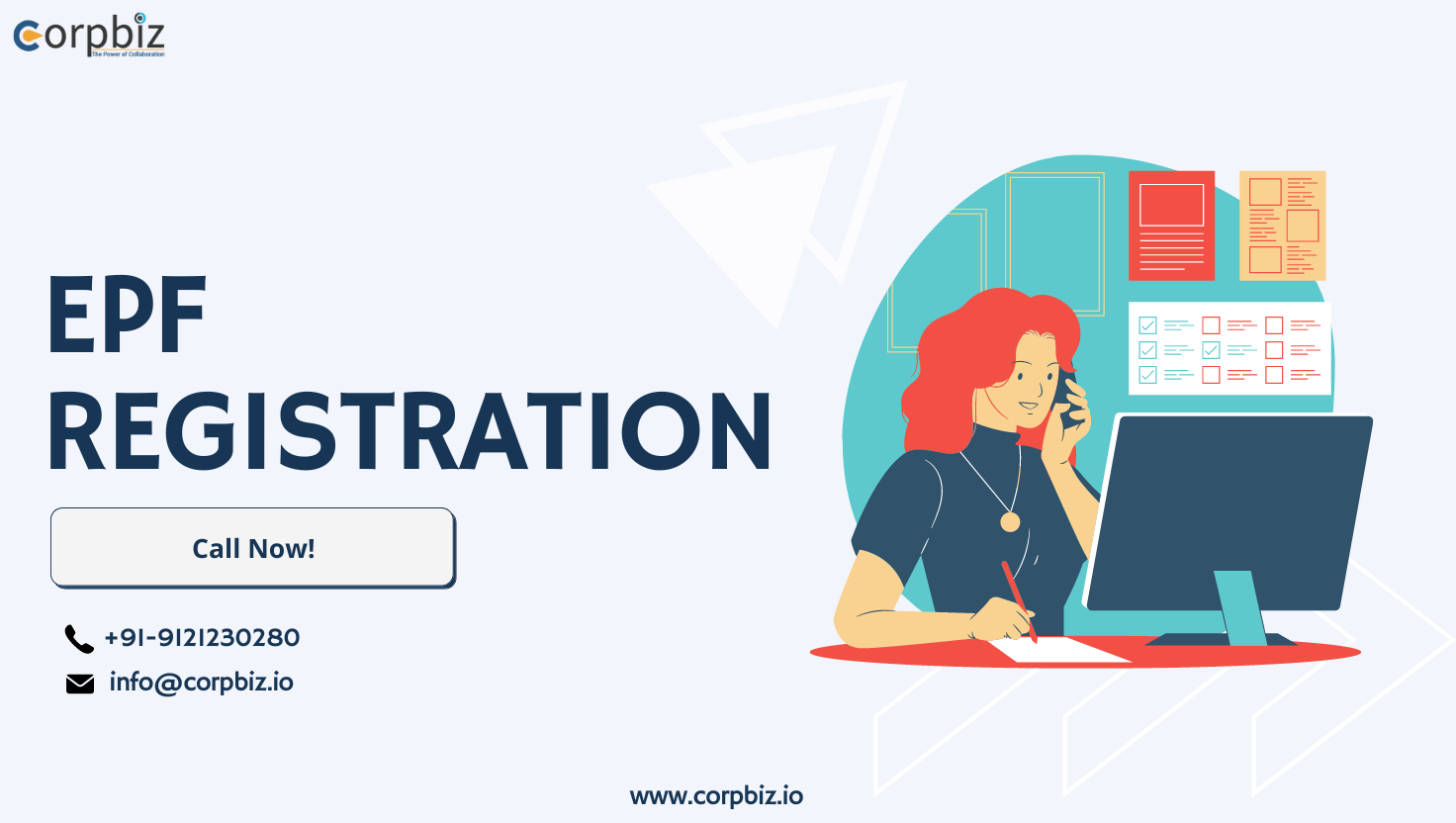Building a secure financial future is a goal for every working professional, and one of the most effective ways to ensure long-term financial stability is by investing in provident funds. In India, the Employees’ Provident Fund (EPF) serves as a reliable and secure form of savings for employees, offering benefits that can prove invaluable during retirement. In this article, we will explore how EPF can contribute to your financial security, the importance of EPF registration, and additional schemes like Employee State Insurance (ESI) that complement your savings strategy.
What is EPF and Why Is It Important?
The Employees’ Provident Fund (EPF) is a savings scheme mandated by the Indian government, aimed at providing financial security to employees post-retirement. Under this scheme, both the employer and the employee contribute 12% of the employee’s basic salary each month. The contributions accumulate in the employee’s PF account, earning interest over time, making it a reliable source of savings for retirement, emergencies, or other long-term financial needs.
The funds in an EPF account grow over the employee’s working years, making it a robust financial cushion by the time they retire. Additionally, EPF allows partial withdrawals for specific purposes such as medical emergencies, home loans, or education, providing flexibility to employees in managing their finances.
How EPF Registration Works
To avail the benefits of the Employees’ Provident Fund, it’s essential to understand the EPF registration process. Every employee in India, whose salary is below ₹15,000 per month, is mandatorily required to be registered under the EPF scheme. However, employees with a salary above ₹15,000 per month can voluntarily opt for EPF registration.
For new employees joining a company, EPF Registration is typically handled by the employer as part of the onboarding process. Here’s a step-by-step overview of how EPF registration works:
- Employer’s Responsibility: Employers must ensure that all eligible employees are registered under EPF. The company needs to be registered with the EPFO (Employees’ Provident Fund Organisation) through the Employees’ Provident Fund new registration process.
- Employee Details: Once the employer is registered with EPFO, they submit the required details of the employees for registration. This includes the employee’s personal information such as name, age, salary, and bank account details.
- UAN Generation: Upon successful registration, a Universal Account Number (UAN) is generated for the employee, which serves as a unique identification number for accessing and managing their EPF account. The UAN remains the same throughout the employee’s career, even if they change jobs.
Key Benefits of EPF for Building a Secure Financial Future
- Guaranteed Returns: EPF contributions are invested in safe and secure government-backed instruments, ensuring a guaranteed return for employees. This minimizes the risk of financial loss, which is crucial for long-term financial security.
- Tax Benefits: Contributions to the EPF are tax-deductible under Section 80C of the Income Tax Act. Additionally, the interest earned on EPF and the amount withdrawn after retirement is also exempt from tax, making it a tax-efficient way to save for the future.
- Emergency Fund: EPF allows partial withdrawals for certain emergencies such as medical treatment, home purchase, or marriage. This flexibility ensures that you can access your savings when you need them most, without having to resort to expensive loans.
- Pension Scheme: Apart from the lump sum savings, the EPF scheme also includes a pension scheme called the Employees’ Pension Scheme (EPS). A portion of the employer’s contribution goes into the EPS, which provides a pension to employees after retirement, adding another layer of financial security.
ESI: A Complementary Scheme to EPF
In addition to EPF, the Employee State Insurance (ESI) scheme is another important government-mandated initiative aimed at providing social security to employees. The ESI scheme primarily focuses on medical and health benefits, offering comprehensive coverage to employees and their dependents in case of illness, maternity, or workplace injuries.
ESI Registration Process
For employers, ESI registration is mandatory for companies with more than 10 employees who earn a gross salary of ₹21,000 or less. Here’s a quick overview of how the ESI registration process works:
- ESIC Employer Login: The employer must register on the Employee State Insurance Corporation (ESIC) portal through ESIC employer login. After logging in, they need to provide relevant business and employee details.
- Submission of Documents: The employer must submit the necessary ESI registration documents for the registration process, which include proof of business address, PAN card, and employee details such as name, date of joining salary, and identification documents.
- ESIC Registration Number: After successful registration, the employer receives a unique ESIC registration number, and each employee is allotted an ESI number. This number is used to track and manage their medical and insurance benefits.
How EPF and ESI Together Ensure Financial and Health Security
The EPF and ESI schemes together offer a comprehensive safety net for employees, ensuring both financial and health security. While EPF focuses on long-term savings and retirement benefits, ESI provides immediate medical coverage, protecting employees from health-related financial burdens.
By registering your employees under both EPF and ESI, you create a holistic support system that safeguards them from future financial uncertainties. Employees can check their ESI status or benefits by using the ESIC search by-name feature, allowing them to keep track of their medical entitlements.
Required Documents for EPF and ESI Registration
Both EPF and ESI registration processes require employers and employees to submit specific documents to ensure compliance. Below are the ESI registration documents and documents for EPF registration:
- For EPF Registration:
- Employer’s PAN card
- Address proof of the business (utility bills, rent agreement, etc.)
- Details of the company’s bank account
- Identity and address proof of employees (Aadhaar, PAN, etc.)
- Salary details of employees
- For ESI Registration:
- Employer’s PAN card
- Address proof of the company
- Employees’ identity and address proof
- Details of employees’ bank accounts
- Salary records of employees
- Business registration certificates
Conclusion: Securing Your Financial Future with EPF
In conclusion, EPF is a powerful tool that can help you build a secure financial future. With regular contributions from both the employer and employee, guaranteed returns, and tax benefits, it provides a robust savings mechanism that can be relied upon for retirement or emergency needs. Complementing this with ESI Registration ensures that employees are also protected against unforeseen medical expenses, making it an ideal combination for long-term financial and health security.
By staying compliant with EPF and ESI guidelines and ensuring timely employee PF registration, employers not only fulfill their legal obligations but also contribute to the financial well-being and morale of their workforce. Whether you are an employee looking to secure your future or an employer wanting to offer comprehensive benefits to your staff, understanding the EPF and ESI schemes can significantly enhance your financial planning strategies.
Source URL: https://coolcoder.org/2024/10/10/how-epf-supports-your-financial-security/




